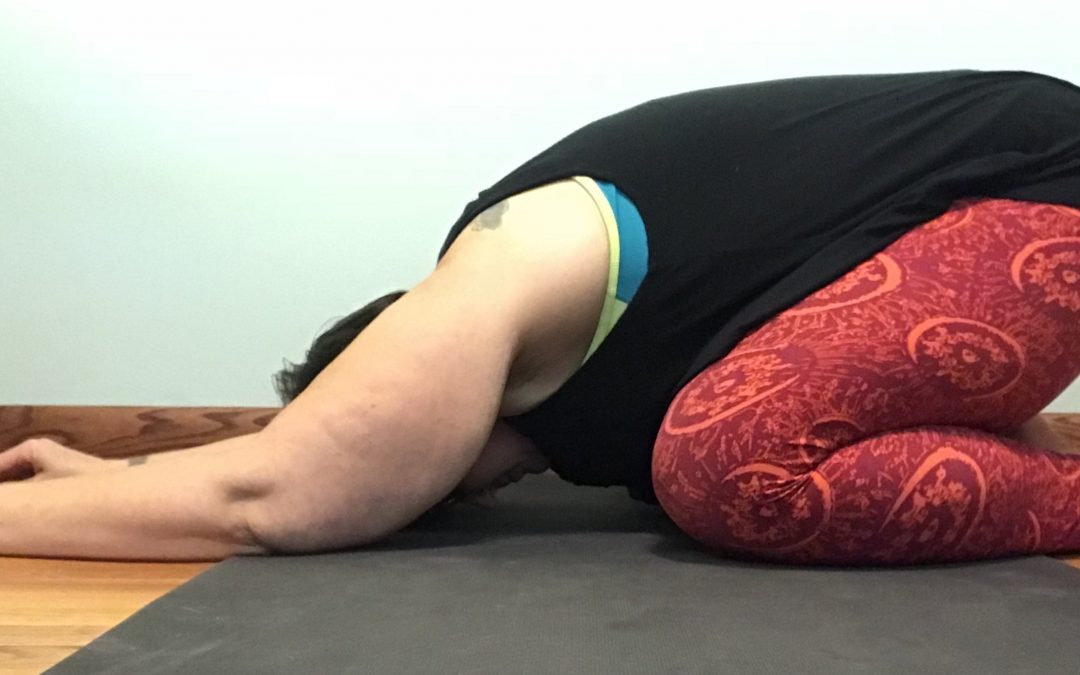Pose of the Month: Balasana, “Child’s Pose”
Sanskrit:
Bālāsana – Child’s Pose
If you’ve ever attended a yoga class there’s a good chance you’ve heard an instructor say something along these lines, “If you need a break, just go into Child’s Pose.”
While I personally do find this to be a restful pose and it feels good to my lower back, gently stretching the lower back, an area I experience chronic pain, I have many students who cannot be in this posture the way it is usually taught. For many people the advice to take a break in this posture is far from restful. Child’s Pose may well be uncomfortable for many reasons and a student new-to-yoga would be at a loss as to what to do when they do need a rest.
 Students with conditions affecting the feet, ankles, knees, hips, back, shoulders, or neck might find this posture very painful; notice how many joints I listed there! Larger-bodied students might find this pose very uncomfortable. Some students have conditions where having head down is contraindicated. These are only a few examples of the types challenges people face when advised to go to Child’s Pose to rest.
Students with conditions affecting the feet, ankles, knees, hips, back, shoulders, or neck might find this posture very painful; notice how many joints I listed there! Larger-bodied students might find this pose very uncomfortable. Some students have conditions where having head down is contraindicated. These are only a few examples of the types challenges people face when advised to go to Child’s Pose to rest.
With that in mind, what are the ways we can help with this. Here’s the method for going into the classic, Hatha Yoga version of Child’s Pose:
- Kneel with feet touching.
- Fold belly over thighs, bowing over legs and extending arms out.
- Rest forehead on the mat.
- Keep belly tucked in, reach hips toward heels.
- lengthen through spine, ribs and arms.
- Breath open the back body.
Turn it Upside-down

 Don’t be afraid to take an upside-down approach! Laying on the back and hugging the knees in with the hands*, either on top of or behind the knees, will give a similar stretch to the body without putting all the weight onto the joints the way kneeling does.
Don’t be afraid to take an upside-down approach! Laying on the back and hugging the knees in with the hands*, either on top of or behind the knees, will give a similar stretch to the body without putting all the weight onto the joints the way kneeling does.
*A strap is also a great way to pull the legs in.






